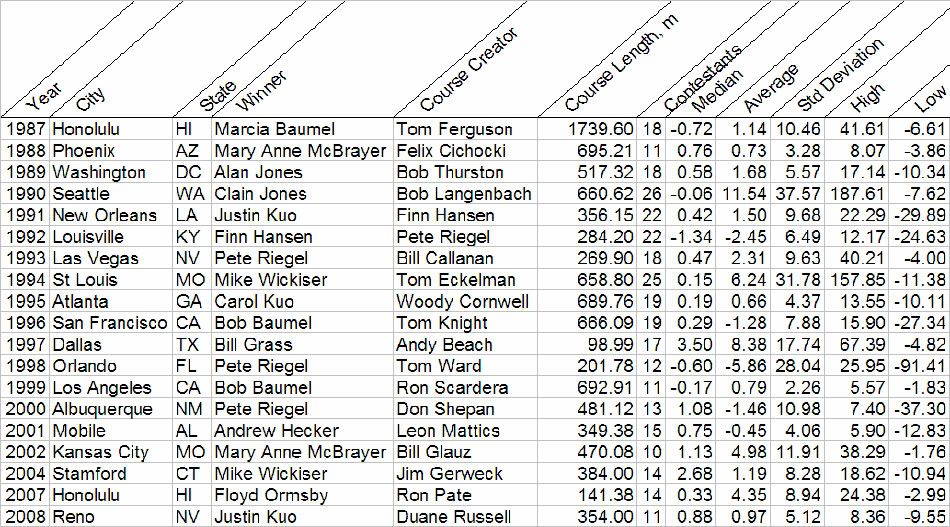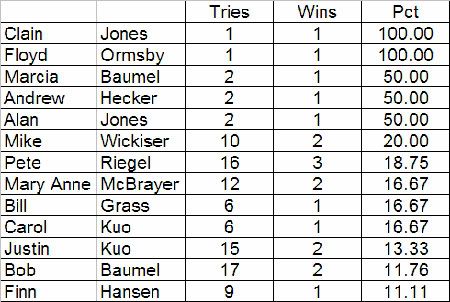The course (map shown below) was inside the host casino, and ran around a large common area, with lots of pedestrian traffic throughout much of the day and evening. One would have thought that the most-accurate measurements were those done in the early-morning hours, but that wasn’t necessarily the case. The winner measured at the height of traffic, about 8:30 on Friday evening. Second place measured Saturday morning, before most people were even thinking about getting up. However, another participant wasted his efforts at the same time (early morning), by not paying attention to detail. He wasn’t good at math at that early hour, either. Someone had better carefully check his paperwork on courses he measures for the next few months.
Submissions for course length ran from 320.15504 meters (I asked for 5 decimal points as a tie-breaker, but it turned out it wasn’t needed) to 383.59375 meters. Margin of error ranged up to 34 meters. Wow! (Gene, that is over 10%! Did you drink before you measured? Talk about bike wobble!)
Now for the results: Justin Kuo won, with a length of 354.86726 meters, which was only .86726 meters off. Way to go, Justin! All that traffic didn’t seem to hurt your measuring a bit. Pete Reigel captured second, with an error of only 1.41373 meters. He took advantage of the lack of traffic by getting up before the youngsters got down to the area. For the record, actual course length was 354 meters (measured with a tape). (While my effort was completely legitimate, and resulted in an error of only 1.41373 meters, I excluded myself from the prizes.) Each won a valueless prize commemorating their presence in Reno, and also bragging rights until the next Challenge. (Full list of competitors is shown below with full results.)
Oh, and who was that measurer that didn’t pay attention to detail, and also erred in the math (even though the formula was printed on the worksheet! [By the way, I corrected his math, so his sorry results are not due simply to an error in calculation])? None other than … well, I guess I shouldn’t reveal him, as I want my certification submissions to post on the Website.
Full results (distances are in meters):


Pete Reigel, Runner-up; Justin Kuo, Winner; Duane Russell, administrator
Link to PDF of map



